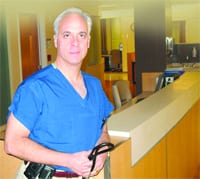Meeting the Need for Homeless Services
With the temperatures dropping into single digits, you can’t help but talk about how cold it is. It was again the topic of conversation at a recent meeting with a colleague who recalled, when she was a little girl, her dad coming into the house on very cold days, rubbing his hands together, and saying, “thank goodness for a warm house.”
Sadly, not everyone has a warm house to live in. On nights so cold you don’t even want to step onto the street — let alone live there — it’s comforting to know that the Center for Human Development (CHD) is working 24/7 to help the most vulnerable families in our community access a warm place to live while working to transition them to permanent housing and self-sufficiency.
Today, there are about 525 families, about 2,200 people altogether, who are sheltered and/or housed within our housing system. Families referred to CHD by the state Department of Housing and Community Development typically spend from 30 to 90 days in shelter. During that time, they receive financial-literacy training, employment and skills training, clinical and mental-health services, and help identifying and qualifying for appropriate permanent housing. Our primary goal is to get families into housing where they have privacy and safety — a place that feels like home.
CHD’s Housing Stabilization Program receives state funding to address specific goals as defined by state law. We help ensure that our veterans, mothers with small children, people with disabilities, and others who are struggling don’t find themselves huddled on a street corner. It may surprise you that people in shelter include families displaced by fire, fathers whose jobs vanished in a tough economy, and persons whose disabilities make finding work and accessible housing extremely challenging.
With help from CHD, families are in from the cold, learning to budget and save money, getting job training or going back to school, and getting help navigating the range of supports to get them back on their feet. Once families leave shelter, they can access a state grant that helps them move into their own place, continue job training, get help with tenant rights and responsibilities, apply for fuel assistance, and secure child-care vouchers so they can work — just the things a struggling family might need to be successful.
Ongoing support for a 12-month, home-based period is dictated by state regulation, and during that period CHD helps families stay on the path to self-sufficiency. It’s especially rewarding when families we’ve helped come back to us to say they’re doing well — and how thankful they are that CHD was there when they were struggling.
If you or someone you know is homeless, contact the Department of Housing and Community Development, 310 State St., Springfield, or call (413) 858-1300. A conversation with a homeless coordinator can determine eligibility for shelter, financial assistance, and services (including from CHD) to help transition to permanent housing.
We are thankful for our many collaborations, partnerships, and contributions from a caring community which make our work possible. During these frigid days, we are grateful for the opportunity to provide a warm home, for which we and our families can all be thankful.
Jane Banks is program director, Homeless Services, at the Center for Human Development.



Comments are closed.